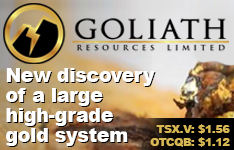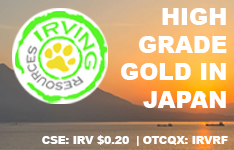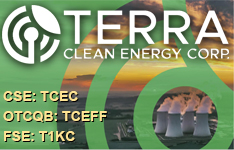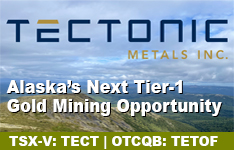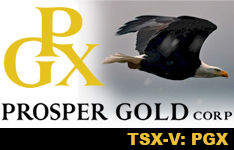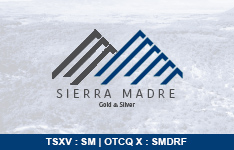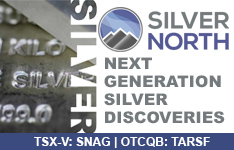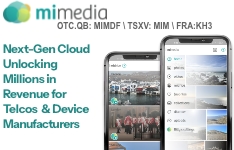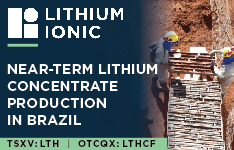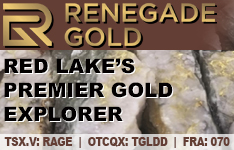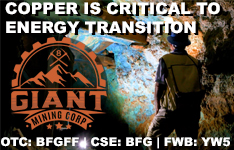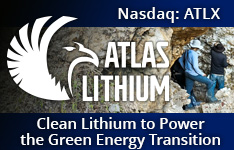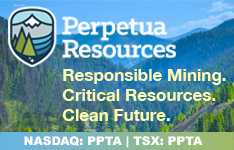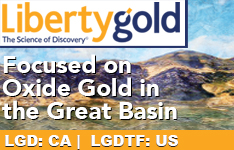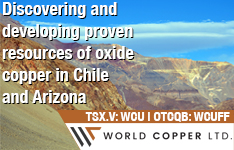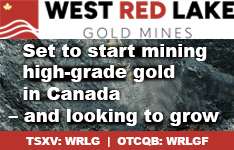Inuvo Inc.'s (INUV:NYSE.American) Q1/25 revenue and adjusted EBITDA surpassed expectations, due to growing demand for the company's artificial intelligence (AI)-powered advertising services as well as additional new clients, reported Maxim Group Analyst Jack Vander Aarde in a May 12 research note.
On the results, Maxim reiterated its Buy rating and US$1.50 per share target price on Inuvo, the analyst noted. Its share price at the time of the report was about US$0.41 per share. The company is trading at a discount to peers, at a 2026 enterprise value:revenue multiple of 0.5x versus their 2x.
Maxim's target reflects a 266% return for investors.
The company has 143.6 million outstanding shares and 80.8% float. Its market cap is US$58.6 million (58.6M). Its 52-week range is US$0.19–0.79 per share.
Strong First Quarter
Vander Aarde reviewed Inuvo's Q1/25 financial results. He highlighted revenue, US$26.7 million (US$26.7M), which was up 57% over Q1/24 revenue. Also, revenue beat Maxim and consensus' estimate of US$23.7M. Agency and Brand client revenue was US$3M, up 11% year over year (YOY), and Platform client revenue was US$23.7M, up 65% YOY.
Adjusted EBITDA was almost break even and slightly exceeded Maxim's estimate.
Gross margin was 79%, about 870 basis points lower YOY. This was attributed to changes in product mix, as expected, noted Vander Aarde. Gross margin was slightly better than Maxim's projected 78%.
Total opex was US$22.9M, slightly higher than Maxim's forecast but consistent with the opex in the previous quarter.
Overall, Inuvo recorded an adjusted EBITDA loss of US$21,900 in Q1/25, better than consensus and Maxim's estimated loss of US$600,000.
The adtech firm ended the quarter with a healthy balance sheet, having US$2.6M in cash and no debt.
"We do not believe the company will require additional capital," Vander Aarde commented.
Product Developments
During Q1/25, Inuvo launched the self-serve version of its IntentKey platform, allowing agencies and markets to build and activate custom audience models themselves, through their preferred demand-side platform. Also, the adtech firm enhanced its custom-designed and AI-powered Insights Dashboard. Now, for instance, it illustrates how brand awareness drives user conversion, shows audience-preferred podcasts and predicts advertising campaign impact.
During the first quarter, Inuvo signed 20 new Agency and Brand customers, 15 of which were self-serve IntentKey customers.
Looking Forward
For Q2/25 Inuvo guided to revenue of US$22.8M-plus, which would be up 25% YOY. The company still anticipates achieving positive cash flow and positive adjusted EBITDA in H2/25. Maxim, for Q2/25, decreased its revenue forecast to match that of Inuvo's (US$22.8M), previously US$24.2M, and its adjusted EBITDA estimate is (US$1.5M).
Maxim's 2025 and 2026 revenue and adjusted EBITDA estimates for Inuvo remain the same. For 2025, they are US$106M of revenue, which would reflect a 27% YOY increase and compares to consensus' US$103.6M, and adjusted EBITDA (positive) of US$1M versus consensus' US$2.8M.
For 2026, Maxim's estimates are US$118M of revenue, for an anticipated 11% YOY increase, and adjusted EBITDA of US$4M.
Vander Aarde purported that Inuvo is nicely positioned for long-term growth and capturing additional market share. This is especially the case, he wrote, because the advertising industry (in which US$600 billion-plus are spent annually on digital media worldwide) is shifting away from using consumer data and demographics in ad targeting as consumers push for privacy. At least 13 U.S. states enacted consumer privacy laws and another 17 states are considering the same. In a corporate move in this direction, Apple eliminated the use of cookies within its browser Safari, and according to Inuvo management, this led to 90% or more of its customers choosing to block third-party cookies and tracking.
"Given that IntentKey's AI technology performs without requiring third-party cookies, we view Inuvo as well-positioned for sustainable market share gains, and we expect a significant ramp in Agency and Brand demand for Inuvo's services going forward," Vander Aarde wrote.
| Want to be the first to know about interesting Technology investment ideas? Sign up to receive the FREE Streetwise Reports' newsletter. | Subscribe |
Important Disclosures:
- Doresa Banning wrote this article for Streetwise Reports LLC and provides services to Streetwise Reports as an independent contractor.
- This article does not constitute investment advice and is not a solicitation for any investment. Streetwise Reports does not render general or specific investment advice and the information on Streetwise Reports should not be considered a recommendation to buy or sell any security. Each reader is encouraged to consult with his or her personal financial adviser and perform their own comprehensive investment research. By opening this page, each reader accepts and agrees to Streetwise Reports' terms of use and full legal disclaimer. Streetwise Reports does not endorse or recommend the business, products, services or securities of any company.
For additional disclosures, please click here.
Disclosures for Maxim Group, Inuvo Inc., May 12, 2025
I, Jack Vander Aarde, attest that the views expressed in this research report accurately reflect my personal views about the subject security and issuer. Furthermore, no part of my compensation was, is, or will be directly or indirectly related to the specific recommendation or views expressed in this research report. The research analyst(s) primarily responsible for the preparation of this research report have received compensation based upon various factors, including the firm’s total revenues, a portion of which is generated by investment banking activities. Maxim Group makes a market in Inuvo, Inc. Maxim Group expects to receive or intends to seek compensation for investment banking services from Inuvo, Inc. in the next 3 months. INUV: We use the NYSE American as the relevant index. Valuation Methods INUV: Our valuation is based on forward EV/revenue multiples that considers peer group trading levels, and further supported by our long-term DCF framework. Price Target and Investment Risks INUV: Aside from general market and other economic risks, risks particular to our price target and rating for INUV include: (1) Customer concentration: A significant portion of the company’s revenue is concentrated into a few key customers. The loss of any of these customers would materially impact the business. (2) Direct relationships with advertisers and advertising agencies: If the company is unable to remain competitive and provide value to advertisers, then advertisers may stop placing ads with the company, which would have a material adverse effect on the business, prospects, financial condition, and results of operations. (3) Competition: The company faces significant competition in its industry and competitors continue to increase their suite of offerings across marketing channels to better compete for total advertising dollars. (4) Credit risk on accounts receivable: The company sells some of its solutions directly to advertisers and advertising agencies on credit. The outstanding accounts receivables to advertisers and advertising agencies are not covered by collateral, third-party financing arrangements, or credit insurance. (5) Acquisitions of assets or businesses is an important component of the company’s strategy: The company’s financial condition may be adversely affected if it is unable to identify and complete acquisitions, fail to successfully integrate acquired assets or businesses, or are unable to obtain financing for acquisitions on acceptable terms. (6) Maintaining minimum listing standards: Failure to satisfy listing criteria may result in the delisting of company’s common stock on the NYSE American. In order to maintain its listing, the company must maintain a certain share price, which the company believes the NYSE American generally considers $0.20 per share, and financial and share distribution targets, including maintaining a minimum amount of shareholders’ equity, and a minimum number of public shareholders. (7) Ad click fraud: In exchange for consumer traffic, the company provides an advertising placement service and shares a portion of the revenue it collects with website publishers. Although the company has click fraud detection software in place, it cannot guarantee that it will identify all fraudulent clicks or be able to recover funds distributed for fabricated clicks. (8) Regulatory and legal uncertainties: While there are currently relatively few laws or regulations directly applicable to Internet-based commerce or commercial search activity, there is increasing awareness of such activity and interest from state and federal lawmakers in regulating these services. New regulation of activities to Internet-based services could have a material adverse effect on the company’s business, results of operations and financial position. (9) Federal, state, and international privacy and data security laws and regulations: A variety of federal, state, and international laws and regulations govern the collection, use, retention, sharing, and security of consumer data. Any failure, or perceived failure to comply with posted privacy policies or with any data-related consent orders, Federal Trade Commission requirements or orders or other federal, state or international privacy or consumer protection-related laws, including the European Union’s General Data Protection Regulation (GDPR), regulations or industry self-regulatory principles could result in claims, proceedings or actions against the company by governmental entities or others or other liabilities, which could adversely affect the company’s business. (10) Third party intellectual property infringement claims: From time to time third parties have asserted infringement claims against the company, including copyright, trademark, and patent infringement, among other things. Any such claims and resulting litigation could subject the company to significant liability for damages or result in the invalidation of our proprietary rights, which would have a material adverse effect on its business, financial condition, and results of operations. (11) Profitability is uncertain: The company has a history of operating losses and reaching profitability cannot be assured. If the company is unable to obtain the required amount of financing needed to fund operations, it would have a material adverse effect on the business and the ability to continue operations. (12) Access to capital and dilution risk: The company may require additional capital to fund operations and/or growth initiatives, which could involve share dilution. If the company fails to generate or obtain the financial resources needed, the company’s business, operating results, and financial condition could be adversely impacted. (13) Recent changes to NYSE Section 802.01C limit listed issuers' ability to use multiple reverse stock splits to remedy listing requirements, thereby putting the stock at a higher risk of being delisted in the future.
RISK RATINGS Risk ratings take into account both fundamental criteria and price volatility. Speculative – Fundamental Criteria: This is a risk rating assigned to early-stage companies with minimal to no revenues, lack of earnings, balance sheet concerns, and/or a short operating history. Accordingly, fundamental risk is expected to be significantly above the industry. Price Volatility: Because of the inherent fundamental criteria of the companies falling within this risk category, the price volatility is expected to be significant with the possibility that the investment could eventually be worthless. Speculative stocks may not be suitable for a significant class of individual investors. High – Fundamental Criteria: This is a risk rating assigned to companies having below-average revenue and earnings visibility, negative cash flow, and low market cap or public float. Accordingly, fundamental risk is expected to be above the industry. Price Volatility: The price volatility of companies falling within this category is expected to be above the industry. High-risk stocks may not be suitable for a significant class of individual investors. Medium – Fundamental Criteria: This is a risk rating assigned to companies that may have average revenue and earnings visibility, positive cash flow, and is fairly liquid. Accordingly, both price volatility and fundamental risk are expected to approximate the industry average. Low – Fundamental Criteria: This is a risk rating assigned to companies that may have above-average revenue and earnings visibility, positive cash flow, and is fairly liquid. Accordingly, both price volatility and fundamental risk are expected to be below the industry. DISCLAIMERS Some companies that Maxim Group LLC follows are emerging growth companies whose securities typically involve a higher degree of risk and more volatility than the securities of more established companies. The securities discussed in Maxim Group LLC research reports may not be suitable for some investors. Investors must make their own determination as to the appropriateness of an investment in any securities referred to herein, based on their specific investment objectives, financial status and risk tolerance. This communication is neither an offer to sell nor a solicitation of an offer to buy any securities mentioned herein. This publication is confidential for the information of the addressee only and may not be reproduced in whole or in part, copies circulated, or disclosed to another party, without the prior written consent of Maxim Group, LLC (“Maxim”).
Information and opinions presented in this report have been obtained or derived from sources believed by Maxim to be reliable, but Maxim makes no representation as to their accuracy or completeness. The aforementioned sentence does not apply to the disclosures required by FINRA Rule 2241. Maxim accepts no liability for loss arising from the use of the material presented in this report, except that this exclusion of liability does not apply to the extent that such liability arises under specific statutes or regulations applicable to Maxim. This report is not to be relied upon in substitution for the exercise of independent judgment. Maxim may have issued, and may in the future issue, other reports that are inconsistent with, and reach different conclusions from, the information presented in this report. Those reports reflect the different assumptions, views and analytical methods of the analysts who prepared them and Maxim is under no obligation to ensure that such other reports are brought to the attention of any recipient of this report. Past performance should not be taken as an indication or guarantee of future performance, and no representation or warranty, express or implied, is made regarding future performance. Information, opinions and estimates contained in this report reflect a judgment at its original date of publication by Maxim and are subject to change without notice. The price, value of and income from any of the securities mentioned in this report can fall as well as rise. The value of securities is subject to exchange rate fluctuation that may have a positive or adverse effect on the price or income of such securities. Investors in securities such as ADRs, the values of which are influenced by currency volatility, effectively assume this risk. Securities recommended, offered or sold by Maxim: (1) are not insured by the Federal Deposit Insurance Company; (2) are not deposits or other obligations of any insured depository institution; and (3) are subject to investment risks, including the possible loss of principal invested. Indeed, in the case of some investments, the potential losses may exceed the amount of initial investment and, in such circumstances, you may be required to pay more money to support these losses. ADDITIONAL INFORMATION IS AVAILABLE UPON REQUEST







